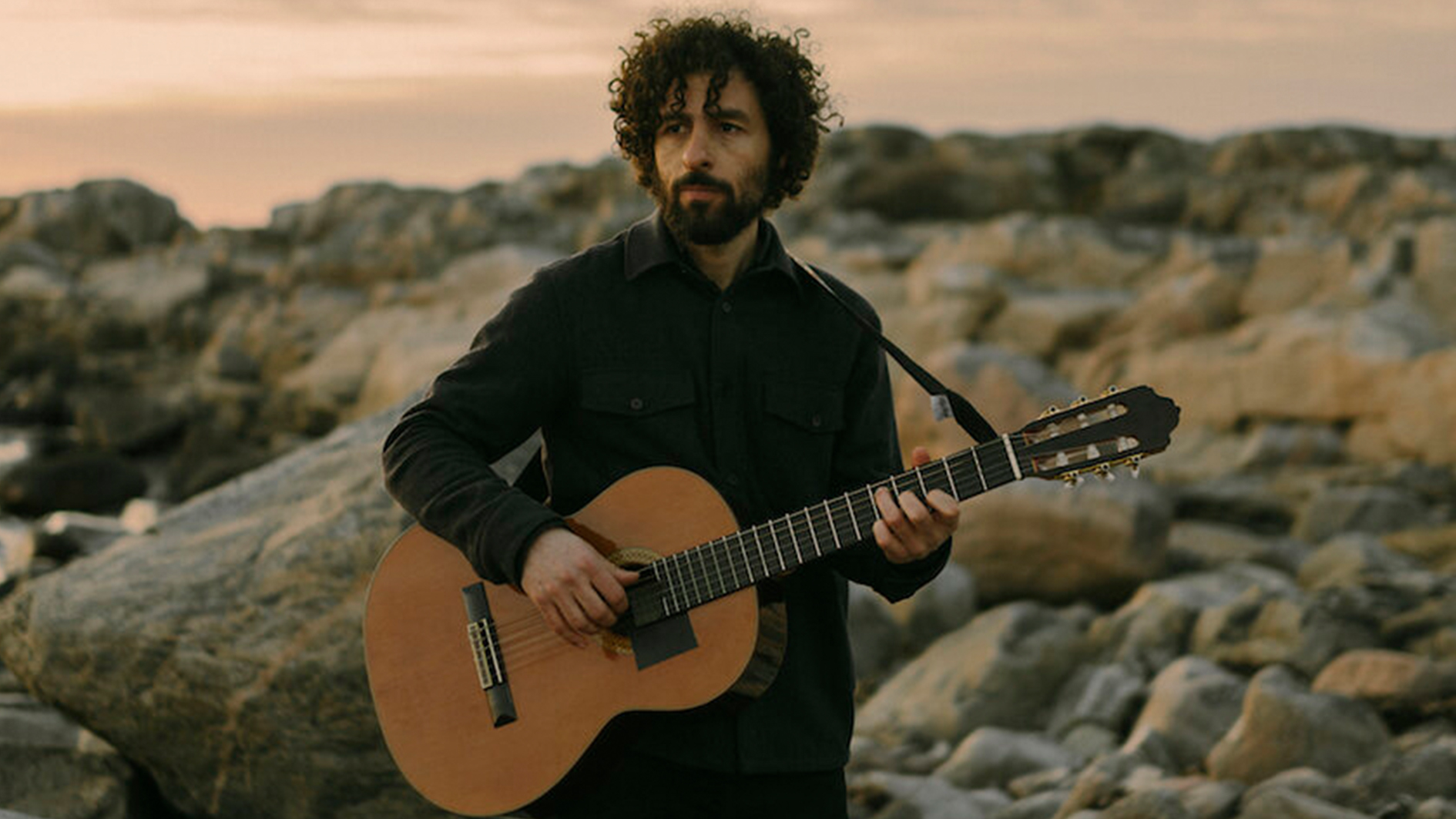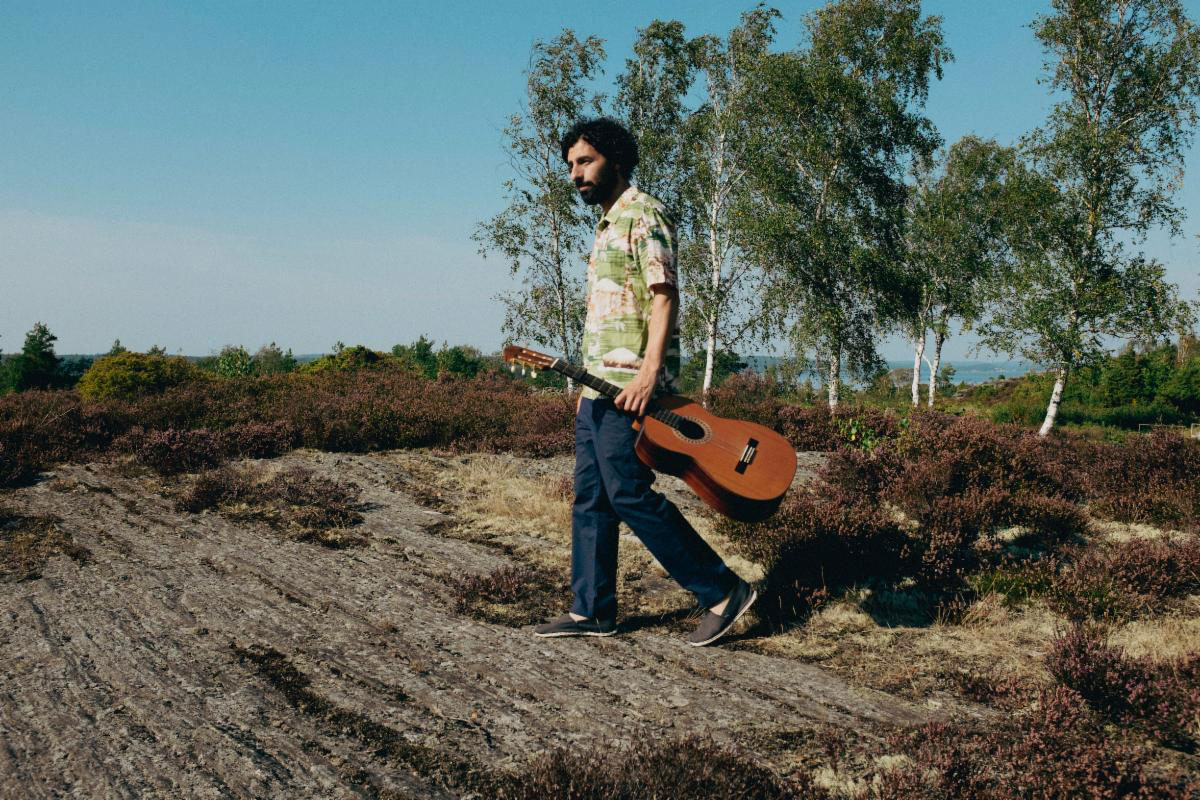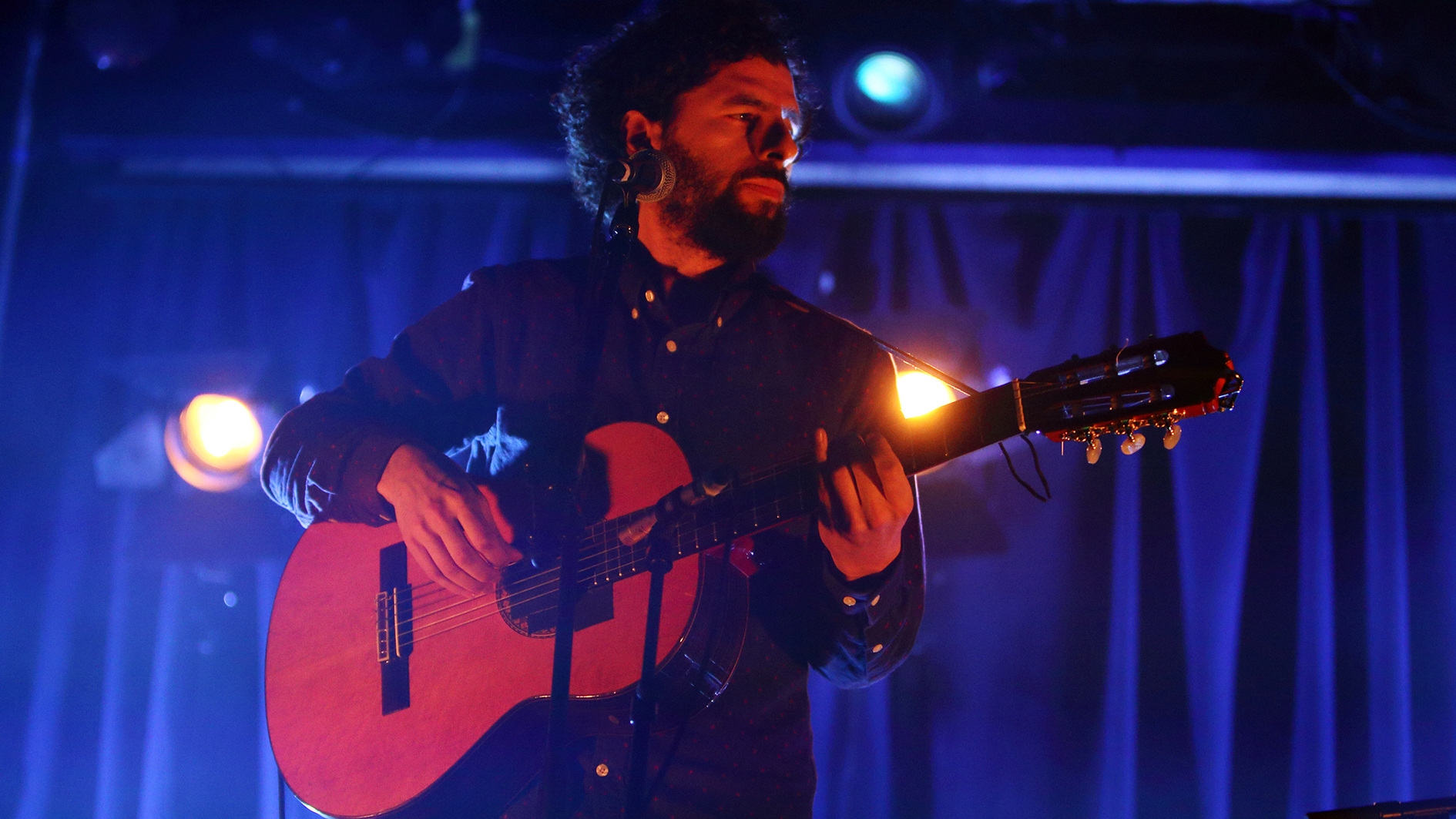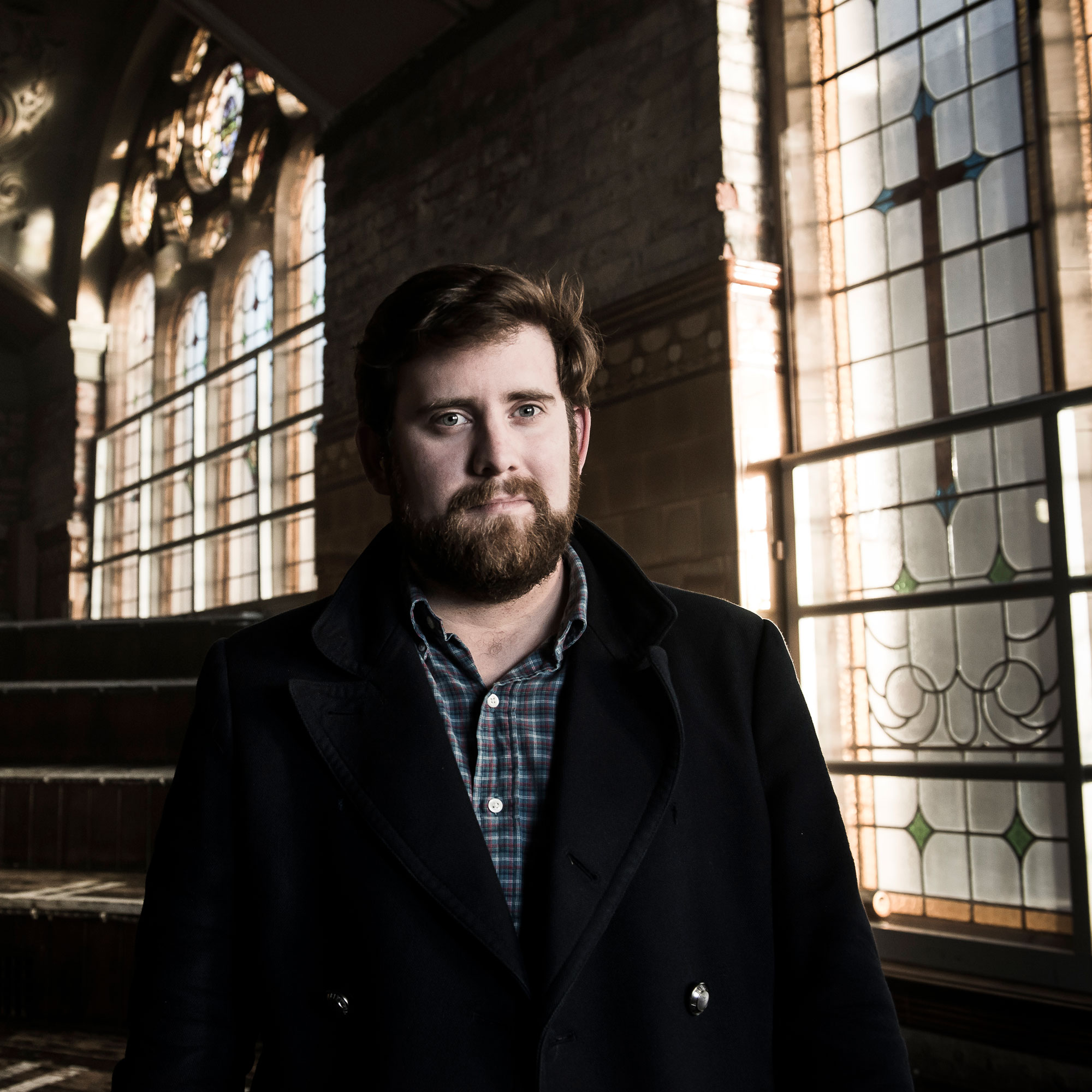José González: "For this album, I didn't buy any new gear. I decided if I'm going to put time into something, it would be on rehearsing guitars and refining the songs"
On fourth album Local Valley, the Swedish songwriter channels a wealth of guitar styles from around the world to focus on the big picture issues facing our existence on this ‘Pale Blue Dot’

José González has never put much faith in borders or national identity, and that principle lies at the heart of his fourth studio album, Local Valley.
Born in Sweden and raised on the Brazilian bossa nova, latin folk and Cuban Nueva Trova of Silvio Rodríguez played at home by his Argentine parents, González's teenage years were soundtracked by US hardcore bands and post-rock experiments like Tortoise, before he began to put his classical guitar training to use in his own songwriting.
Since that point González has seemingly never stopped expanding his musical horizons, pulling in Asian scales, sub-Saharan guitar styles and, in his listening, Ghanaian highlife, Nigerian afrobeat and more.
However, it feels as if Local Valley is perhaps the most varied, playful and successful attempt he has made at knitting it together, powered, as ever, by his unique and ever-evolving magpie-classical guitar style.
González’s masterstroke on Local Valley is using this rich, tapestry of global influences to highlight humanity’s preoccupation with tiny rivalries in the face of universal challenges. Fortunately, he makes it sound good, too...
You've said that on this record you set out to write songs in the same vein as your old records, which is the opposite of what most artists say. Why did you take that approach?
“Because I enjoy playing guitar and enjoy the simplicity of many of my old songs. I feel like all my songs have that ambition of simplicity. But I think this time I did look back on my first album and [spent time] remembering how I was thinking back then in terms of song length, and aiming for guitar playing that was right on the edge of my skill level.
Get The Pick Newsletter
All the latest guitar news, interviews, lessons, reviews, deals and more, direct to your inbox!
“So that was the first aim, but once I had like five or six songs, I switched to do all these other songs that are looped guitars and vocals and drum machines. So I did start with that ambition, but I didn't end up with another Veneer!”
Rules are made to be broken! You mentioned aiming for guitar playing on the edge of your ability. What does that process look like for you?
“I always start with guitar riffs. And at that time, it's usually stuff that's pretty easy to play. But then I always push up the ambition in terms of trying to embellish these riffs with a top line melody, or a bass line that's a bit more complicated to play. And then, usually, I reach a level where it's too hard to play, but I know I could do it, if I only practice. And that's when I start using the metronome. Sometimes it's a lot of practice before I get it and I’m done with a particular song.
I want to have songs where I can focus more on the groove and trance-like states
“On this album, maybe one of the clearer examples is Valle Locale, the Spanish song. It was really hard to play it and sing at the same time. Once I had a recording, I was so pleased that I actually made it, I kept it. But then, with the pandemic, I got more time to think about it.
“I was listening to the song while while running, as I usually do, and it felt way too slow, so I started training guitar! Playing it faster and faster and seeing where it sounded too fast. So that's one way that I pushed myself. I find that's always been one way to bring musicality to a piece – by being able to play faster than you need to, you're able to play each note with with the tone you want.”
Much has been made of the Latin influences in your music, but there's not much discussion of the African influences that have come to the fore in your playing. Tell me about the impact of those musicians on you. I really hear it on this record in songs like Tjomme.
“Yeah! Of course. Around my second album [2007’s In Our Nature], I started listening to Ali Farka Touré, and Tinariwen. And later, I had the chance to tour with Sidi Touré and also do a guest appearance with Tinariwen in London and Stockholm. And then I had a jam session with Bombino from Nigeria. So, yeah, it started around the second half of 2007 when I made the Killing For Love and I’ve just kept on introducing that influence.
“That bluesy, bubbling sound, to me, it hits this nerve. It's very rhythmical and very groovy, but it has this earthiness that I enjoy so much, this certain rawness. I guess it also speaks to what I enjoyed so much with hardcore music, or instrumental post-rock, or bands like Tortoise, where there is this linearity.
“So many of the songs, they're just one or two note song structures and it’s that sense of trance that I that I enjoy… When I play live, I get a bit bored if I only have songs like Crosses and Heartbeats. I feel like I want to have songs where I can focus more on the groove and trance-like states.”
There’s something universal and borderless about this record. You’ve never placed much importance on national identity, but here there’s a really noticeable array of influences from around the world. You have songs in Spanish and Swedish, and songs like Swing and Lilla G, which are universal in that they’re based around dance or repetitive, chanted melodies. Why did now seem the right time to do that?
“Well, in a way, I felt like I've done that before. Maybe not the languages, but the styles. So a song like The Forest [from 2015’s Vestiges & Claws] was inspired by Indian raga and pentatonic major scale that's so typical for Asian music. But what’s new? The languages and the range of styles is even more diverse, I guess.
“But yeah, the time is right for many reasons. I feel more comfortable showing more of myself and I feel more comfortable singing in these languages. I was ready to do that on the previous album, but I got stuck and and in a way lazier and when I switched to English, it just flowed easier! On this album, once I tried it, it just clicked, and I didn't feel like I got stuck anytime.
“Becoming a dad changed my mindset a bit, too. You’re forced to be creative when you're around a kid, there's lots of playing and lots of singing, too. There's been so much melody going around in my mind and I guess that helps once it's time to write a song – you're already being creative everyday, so it's not a big switch.
“As someone who's felt like I've had constant writer's block – that was the typical way of feeling when I was supposed to write a new song, back in the day – becoming a dad helped me a lot.
I see the world, this earth, this planet as our local valley. I see the smallness of our ‘Pale Blue Dot’, as Carl Sagan has put it. When you zoom out into the universe, this is a very small place that we live on
“And with languages, too – just speaking Spanish with my daughter has sort of relaxed my sense for words in different languages. Also, your time is limited, and you have to catch sleep so it's like, it's now or never!”
You recorded this album at your family’s summer house in Sweden. Can you describe your space there?
“Yeah. I call it the studio, but it's it's just a house with a wooden floor, a wooden ceiling, so it has nice acoustics. I was looking for a new studio in the city, but we got tired of looking and bought this summer house, where we hang out as family.
“So when I was writing and recording, I went there on my own and set up my mic preamp and a laptop in the middle of the living room, with the view: the rocks and pines and birches and the birds!
“So that was perfect for me as a place where I can I could write and record and then take breaks going out in nature. It's become to me a very big part of this album. When you see sunsets, you get romantic! And when I'm on my own there I also enjoy thinking about the bigger topics: about humanity and the future.”
Were you doing the engineering yourself for much of this record?
“Yeah, for almost all of my solo albums I have been engineering it myself. This time, I decided not to buy any new gear, not to buy any new plugins! I decided if I'm going to put time on something, it's going to be on rehearsing guitars and refining the song. So as I'm using my Neumann U67 and using Universal Audio gear and plugins, which I'm very comfortable with, to bring out this analogue sound.”

Were there any guitars that you favored more heavily on this album?
“Most of the time I was using one of my live guitars, an Esteve. It's a 9CB, with old strings. But I also have a smaller guitar by Cordoba. I was thinking of using more guitars, but I ended up using the same ones for almost all the songs and making it slightly different from song to song [with mics/positioning].
“So most of the songs I'm [recording guitars and vocals separately] with the Neumann U67, but then on some some recordings I was doing a stereo mic on the guitar and a vocal Neumann, like a live recording setup. I guess one that stands out as fun is Swing, where I recorded the vocals with an SM57, one of the cheapest mics you can get.
“I was rehearsing the loops through a Schertler acoustic amp and I ended up using a line guitar through my live setup, which is just an EQ pedal and a tube DI. A [Radial Engineering] Firefly, and putting the vocal through the ’57 and then through the tape delay – a [Roland] Re-201 Space Echo. And that sounded great.”
What is it about the Esteve and Cordoba in particular, that you that you love?
“Well, live, I'm using an Alhambra, which I've had throughout the years with a Fishman Prefix Pro Blend pickup. It's not particularly good in intonation, it has some flaws, but over the years it's been the guitar that I'm used to, so I was trying to find similar guitars and Esteve's 9CB was similar enough to it, so I bought two of those. One one with the pine [spruce] wood [top] and one with the cedar top.
I like old strings, but once in a while I really enjoy new ones – not brand new – but new. But it's not fun to play them in!
“There’s nothing special about it. It's a very typical classical guitar, but it’s what I know best. Playing live, I've gotten used to the frequencies it has. So there's a resonance around the tone A, which, sometimes it's cool for boosting the sound. And, since we know the frequencies we need to notch, it's practical to use similar guitars.
“Then the Cordoba guitars are slightly smaller and they have a resonance around G. And I have very old strings on that particular Cordoba guitar that I was using. So if I switched to the Cordoba, it was mainly to aim for a bit more of a lo-fi sound. So I used that for Valle Locale and for Honey Honey. It was mainly for the strings and not so much the guitar itself actually.”
When you say ‘old strings’, how old?
“Let's see, I think the Cordoba, I haven't changed once. And I got it about four or five years ago. But I have to add that it's one of the guitars that I don't use as much because I'm using the live guitars more. But even the live guitars, I would say I change the strings about once a year, or something.”
This is reassuring for those of us who own nylon-string guitars and hate changing the strings on them…
“Yeah. It's horrible. Now I actually need to change them before the US tour and I hate it. Because I have to change them and play them in. And it's not fun to play them in! It sounds so metallic and, yeah, it's horrible.
“But I have to say, I like old strings, but once in a while I really enjoy new ones – not brand new – but new. So you get that fresh tonality and sustain. I’ve used that on a couple of recordings, but on this album I'm working more with the reverbs and delays to get that freshness.”

It's good to know that we have your permission to leave them on for forever.
“Yeah, I'm not sponsored by any string makers yet! Probably because I'm not the best promoter…”
“I don’t change strings often but once every five years, I use…”
“[Laughs] Yeah, or I go to my guitar shop and ask if they're throwing away any old strings.”
Alternate tunings have proven quite fertile ground for you before. What are your preferred tunings at the moment?
“Yeah, I use the regular tuning and then I have ADA [on the bottom strings], which is one from my second album. And then for the songs that are in the Sahel Desert style, my favorite is EADA – so it’s just the G that goes up to A.
“[Two that are done] in a similar tuning [are] Fold and Far Away, where the E goes down all the way to B. So it's BADG, and with the capo on the second fret, but only five out of six strings so you get that very, very low bass and then more regular highs. Then Honey Honey is also similar with BABG.”
We’ve talked about the sort of borderless, universal nature of the music on this record – the languages, the influences from across the globe, the universal nature of these songs about rhythms and trance states, or dance. So why is the record called Local Valley?
“Because I see the world, this earth, this planet as our local valley. I see the smallness of our ‘Pale Blue Dot’, as Carl Sagan has put it. When you zoom out into the universe, this is a very small place that we live on. So that's one of the ways I think about the title, especially in a song like Visions.
“Then in the song Valle Locale, I'm thinking more in terms of a local valley where you have tribes that talk past each other, they can't collaborate, they don't want to communicate and they're sort of stuck. And if you're smart, you see all these other beautiful valleys, that could be so much more comfortable – if we only collaborated to go to these better, nicer places.”
- José González's new album Local Valley is out now via Imperial Recordings.

Matt is Deputy Editor for GuitarWorld.com. Before that he spent 10 years as a freelance music journalist, interviewing artists for the likes of Total Guitar, Guitarist, Guitar World, MusicRadar, NME.com, DJ Mag and Electronic Sound. In 2020, he launched CreativeMoney.co.uk, which aims to share the ideas that make creative lifestyles more sustainable. He plays guitar, but should not be allowed near your delay pedals.









